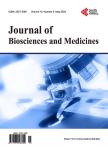Innate Immunity in the Development of Connective Tissue Dysplasia: Pilot Study in Children with Congenital Hip Dislocation
Innate Immunity in the Development of Connective Tissue Dysplasia: Pilot Study in Children with Congenital Hip Dislocation作者机构:Biochemistry Department Privolzhsky Research Medical University Nizhniy Novgorod Russian Federation Department of Children Orthopedics Privolzhsky Research Medical University Nizhniy Novgorod Russian Federation Laboratory of Immunology Privolzhsky Research Medical University Nizhniy Novgorod Russian Federation
出 版 物:《Journal of Biosciences and Medicines》 (生物科学与医学(英文))
年 卷 期:2022年第10卷第7期
页 面:155-170页
学科分类:1002[医学-临床医学] 100214[医学-肿瘤学] 10[医学]
主 题:Congenital Dysplasia Congenital Hip Dislocation Connective Tissue Metabolism Biomarkers Immune System
摘 要:Introduction: Observing and treatment of hip dysplasia in children have always been in the sphere of interest of modern molecular medicine. The role of molecular factors in the formation of connective tissue dysplasia in children is considered crucial for such multisystem disorders, and connective tissue dysplasia progressing involves immune system parameters and biochemical markers. The aim of this work was to establish the relationship between immune status indicators and biochemical markers of connective tissue using bioinformatics and modeling methods. Materials and Methods: 27 patients with congenital hip dislocation, admitted to the University Clinic of Privolzhsky Research Medical University, Department of children orthopedics for surgical treatment, were examined. Determination of 10 blood parameters was conducted by modern biochemical and immunological methods. Statistica 12.0 software from StatSoft was used for statistical data processing. Methods of nonparametric statistics were used since the samples in the control group partially follow the normal distribution. Correlation methods and regression modeling methods were used to evaluate the relationship of indicators. Results and Conclusion: In our investigation we have shown the presence of statistical and mathematical interactions between the parameters of innate immunity and indicators of connective tissue metabolism. The leading role of the immune system in the development of pathologies associated with connective tissue dysplasia is assumed. In further investigations it is necessary to clarify the role hypoxia in HIF-1 stimulated control of skeletal dysplasia, collagen modification, connective tissue dysplasia development.



